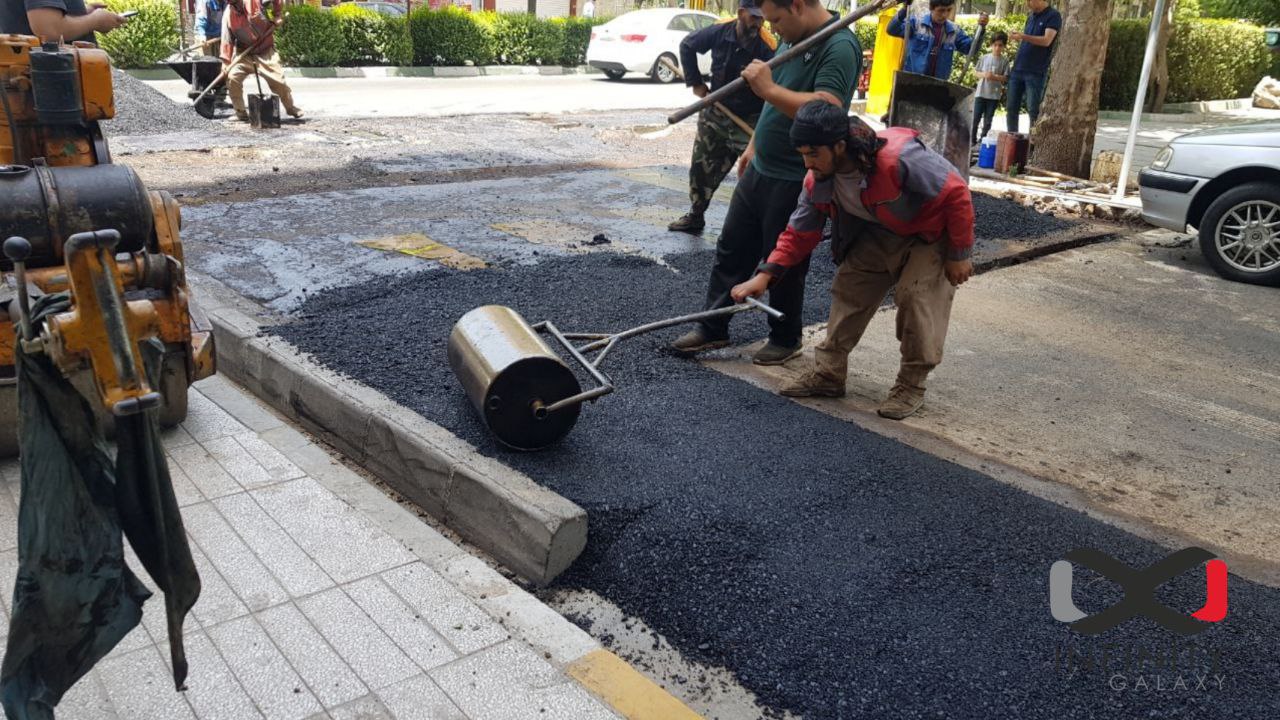Transform Your Property's Landscape with Hot Mix Asphalt Paving Excellence
Transform Your Property's Landscape with Hot Mix Asphalt Paving Excellence
Blog Article
Unlocking the Secrets of Hot Mix Asphalt Technology
Checking out the depths of warm mix asphalt modern technology discovers a world where specific formulas and precise procedures converge to form our roads and framework. The combination of fillers, accumulations, and binders isn't simply a construction job however a strategic orchestration of longevity and effectiveness.
Importance of Warm Mix Asphalt
Hot Mix Asphalt plays a critical duty in modern infrastructure advancement due to its toughness and cost-effectiveness. As the most generally used paving material for roadways, freeways, and car parking lots, Hot Mix Asphalt offers a variety of benefits that contribute to its value in building and construction jobs.
The toughness of Hot Mix Asphalt stems from its composition, which consists of aggregates, binder, and filler products that are meticulously chosen and mixed to fulfill certain performance needs. Generally, the significance of Hot Mix Asphalt in infrastructure growth can not be downplayed, as it continues to be a cornerstone of modern-day building practices.
Elements of Asphalt Mixes
The structure of asphalt mixes contains very carefully selected accumulations, binder, and filler materials that are critical for accomplishing specific performance requirements. Accumulations are the primary part of asphalt mixes, supplying strength and security. These accumulations can be natural, such as crushed rock or crushed rock, or synthetic, like recycled materials from old sidewalks. The binder, commonly bitumen or asphalt concrete, holds the aggregates with each other and supplies flexibility and sturdiness to the mix. The selection of the binder is vital as it directly influences the mix's performance in various weather conditions. Fillers, such as moisturized lime or Rose city cement, are utilized to boost the mix's workability and aging resistance. Angled Parking.
The mix and percentage of these components play a considerable duty in identifying the top quality and performance of the asphalt mix. Engineers very carefully make the mix to meet particular needs, considering aspects like traffic volume, environment problems, and pavement life expectancy. Proper selection and harmonizing of accumulations, binder, and fillers are necessary for producing resilient, resilient asphalt pavements.
Combining and Manufacturing Strategies

As soon as the accumulations are picked, the binder, often asphalt cement, is contributed to bind the materials with each other. The binder's top quality and amount significantly impact the mix's adaptability, toughness, and resistance to environmental aspects. In addition, fillers like hydrated lime or Portland concrete might be included to enhance certain characteristics of the asphalt mix, such as its workability or moisture resistance.
Throughout manufacturing, the aggregates and binder are heated up, generally in between 250-325 ° F(121-163 ° C ), to help with blending and ensure proper layer of the accumulations. The mixing process needs to be detailed to attain a homogeneous mixture that advertises the preferred performance characteristics of the asphalt. Numerous methods, such as batch blending or drum mixing, are employed to attain constant and high-quality asphalt mixes for building and construction jobs.
Factors Influencing Asphalt Performance
Aspects affecting asphalt performance include an array of variables that impact the longevity, longevity, and general top quality of asphalt pavements. One essential aspect is the top quality of materials utilized in the asphalt mix.

Environmental problems likewise affect asphalt performance. Temperature level variations, dampness infiltration, and web traffic loads can all affect the architectural stability of the sidewalk. Design factors to consider, such as sidewalk thickness and drain, are important in making certain the long-term efficiency of the asphalt sidewalk. By thoroughly taking into consideration these factors, designers and contractors can optimize asphalt performance and improve the solution life of sidewalks.
Lasting Practices in Asphalt Modern Technology

Furthermore, the advancement of blog warm-mix asphalt (WMA) innovations has gotten traction recently. WMA enables the manufacturing and placement of asphalt mixes at lower temperatures contrasted to typical hot-mix asphalt, causing decreased energy consumption and greenhouse gas exhausts. The usage of permeable asphalt mixes can aid reduce stormwater overflow issues by permitting water to infiltrate with the pavement and into the ground, promoting natural water filtration and recharge procedures. By applying these sustainable practices, the asphalt industry can add to developing a more resilient and ecologically pleasant facilities network.
Final Thought
In verdict, warm mix asphalt technology plays an important duty in modern-day framework growth due to its sturdiness and cost-effectiveness. By meticulously stabilizing parts, employing proper blending techniques, and considering various factors, engineers can create top quality asphalt mixes that endure heavy traffic loads and harsh climate condition. Welcoming lasting techniques, such as making use of warm-mix innovations and recycled materials, further enhances the ecological kindness of asphalt innovation.
Mixing and manufacturing strategies about his in warm mix asphalt innovation involve the specific mix and processing of aggregates, binder, and fillers to develop a high-performance and long lasting asphalt mix.Elements influencing asphalt efficiency include a range of variables that impact the durability, long life, and total top quality of asphalt pavements. Sustainable techniques in asphalt innovation encompass numerous efforts aimed at lowering the ecological impact of asphalt production and paving procedures. By including recovered asphalt pavement (RAP) and recycled asphalt roof shingles (RAS) right into new asphalt blends, the industry can considerably lower the intake of raw materials and power, while also lowering garbage dump waste.
WMA permits for the production and positioning of asphalt mixes at reduced temperatures compared to typical hot-mix asphalt, resulting in decreased power consumption and greenhouse gas discharges.
Report this page